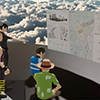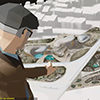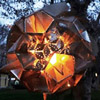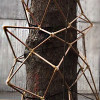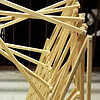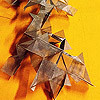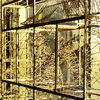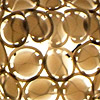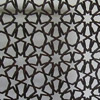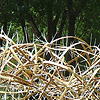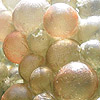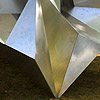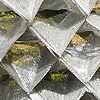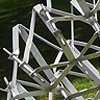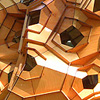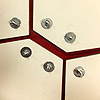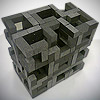This is the latest reel video of the Online Virtual Studio (OVS) project. We conducted it together with Oğulcan Üneşi and Serkan Uysal since 2022. We tried to develop a tool for online and blended education in architectural studios. The tool has specific features tailored for design studios. İstanbul Bilgi University Scientific Research Fund partially supported this project. This video showcases the latest toolset OVS provided. The tool takes some […]
Posts with the keyword design studio
There are cognitive, technological, and pedagogical ideas and experimental studies on architectural design education in virtual environments. In the existing literature; new software tools were developed, add-ons to existing software were developed, or software prototypes were developed and tested on various platforms such as game engines. In the distance education model, currently, there is no stand-alone software, specifically developed for the needs of architectural design studios. Similarly, there is no […]
The Istanbul Bilgi University Scientific Research Project, titled “Exploring the Possibilities of Using Game Engine-Based Collaborative Virtual Environments in Architectural Design Studios”, or “Virtual Design Studio” in short, is about testing a virtual environment for online and blended models of education in architectural design studios. The presentation tools used in the architectural studios are directly effective in determining the boundaries of design thinking. Today, there is no specialized tool for […]
In the first-year Computation Based Basic Design studio at İstanbul Bilgi University, the aim is to help students understand that design, due to its prevalent relational nature incorporates different forms of reasoning as indispensable constituents within the creative process (Yalınay Çinici, 2013). The studio integrates the 1:1 scale construction via computational thinking which consists of geometric relations, material computation/performance, and CAD/CAM technologies. The aim of the studio is to develop an awareness of immediate or far surroundings […]
This is a student project on Computation-based Basic Design at Bilgi. The group of students completed it in the 2015 Spring semester. This research was very successful in achieving its intended physical performance, which was holding on to a tree designed for (and even near climbing up in some cases). The system is lightweight yet very powerful, holding on but not causing any harm to its “host body“, the tree. […]
This project named Two Plus One explains itself very well. The students explained their motivation differently from the rest of the studio. In our Computation-based Basic Design Final Project, we are inspired by Theo Jansen’s Strandbeest sculptures, and we wanted to make our arboriform kinetic. First, we made a copy model of the original kinetic sculpture for ourselves in order to observe its shape, parameters, and movement patterns. We realized that the […]
This year’s first semester at Basic Design Studio was full of surprises. Together with Can Sucuoğlu and Birgül Çolakoğlu, we coordinated 9 student groups in their 4-week final project called “Arboriforms“. “Arbori-” is derived from the Latin word “arbor,” meaning “tree,” and “-form” indicates a shape or form. Therefore, we can understand “arboriform” as an adjective describing something that is tree-like in appearance, structure, or form. For example, one might […]
The final countdown has started until the jury of this semester’s Basic Design studio. Everyone is excited to see the products of this year’s architecture, interior design, and industrial design students, while they are trying to set a higher standard for the exercise. They’ll use both digital and physical media to unfold their design intentions about a systematic whole. Below is the current situation of our group together with Fulya […]
This year’s “Lanterns” assignment was nothing short of spectacular. It left both the students and faculty in awe of the creative brilliance displayed. Despite facing constraints in terms of time and experience, the Basic Design students surpassed all expectations. They crafted mesmerizing compositions of polyhedra and intricate unrolled surfaces. Their ability to conceptualize and execute such remarkable lantern designs can be attributed to the valuable skills they honed in their […]
This paper presents the beginnings of my journey into architectural education, presented at Yıldız Technical University Architectural Education Symposium 2007, together with YTU/CADU staff; Ela Çil, Birgül Çolakoğlu, Meral Erdoğan, Fulya Akipek, Oya Pakdil, and Şebnem Yalınay. It includes different exercises from various studio instructors, all motivated by contemporary computational design theory. This was one of the milestones in the first year of education of a computation-based studio in Turkey, […]
This was my first parametric patterning study we conducted together with Birgül Çolakoğlu at Yıldız Technical University in 2008. It was based on the pattern exercises we’ve experienced with BOT Graduate Students as a preliminary study within a Computational Design Studio. Later, the CNC fabrications were exhibited at İstanbul Bilgi University Digital Design Symposium. The exercise was about analyzing and reconstructing regular İslamic Patterns via MaxScript. After fundamental instructions about the […]
This is another brave group of students. They studied one of the most interesting materials in this year’s Basic Design studio. They tested the structural capacities and nearly all possibilities of thin Bamboo sticks. Unfortunately, they lost most of the prototypes, and one of them was a beautiful structural tripod. In the final assembly, they managed to span the required distance by attaching bamboo sticks using plastic fasteners. Below are […]
The material system experienced here is an extreme example of our final projects in İstanbul Bilgi University Faculty of Architecture, first-year Basic Design studio. Students studied fiberglass as their core material and they searched for weeks to find a proper way to expose this material’s potential into a spanning structure. They tried lots of different components, basically using molds to give shape to glass fibers. However, their final decision was […]
Below is one of the fourteen final projects of the freshman year Basic Design studio in İstanbul Bilgi University Faculty of Architecture. The component is made of folded aluminum sheets. Students insist that this is the most optimal solution to the problem of polyhedra in a component-based structure. They experimented with this shape a lot and tried their best to make one that has similar triangular faces on different sides, […]
This group used aluminum expanded mesh in order to test its balance between structural capacity and weight. They folded different-sized sheets to create components, then assembled them creating a span of 2,5 meters approx. They managed to control the macro form by manipulating the component precisely. This year, the dominant discussion among the studio instructors was the context; how to include (or not include), manage, and think about the context, […]
The material system of group 2 at İBU Basic Design project was based on a component developed using tensegrity forces on aluminum bands. Although it was hard to maintain structural solidity with the heavy material, they proved that letting aluminum fly over a predefined distance (at least for a limited time) is possible. *Students: Büşra Kavuk, Büşra Pamuk, Mustafa Sert, Ahmet Evci, Safa Bayam, Sibel Küçükcoşkun, Gizem Işıkalp, Serenay Erbektaş, […]
The following posts will include some of the final projects, completed in Basic Design Studio, İstanbul Bilgi University Faculty of Architecture in 2013. Below, you see the amazing work of group 1, an interlocking system that presents diversity and structural integrity at the same time. This project initiated a hard discussion among the final jury. I think the interesting geometric underlying, great precision for a hand-made computer modeling of each […]
Below is the final production of the three-day workshop at Bolu İzzet Baysal University Faculty of Engineering and Architecture. For more information about the process and the photos from the first student prototypes, you may visit the workshop blog at infections2.blogspot.com Grasshopper definition developed within the workshop is a simple multi-attractor system that deforms (or re-constructs) a regular square grid using the well-known Voronoi subdivision. I’ll post the definition here.
This is an old research paper, prepared with Birgül Çolakoğlu. It is in Turkish and includes our first results in some of the Rhinoscript exercises. Here is the abstract of the paper; Recent research in architecture have focused on to understand computational methods of formal exploration and expression. Computational mechanisms have been used to readdress formal issues using new techniques and methods. Computational tools that operate on algorithmic logic are central in […]
This was last week’s Basic Design II exercise at İstanbul Bilgi University, a captivating challenge that pushed students to explore the realm of solid and void compositions using pre-defined components. The objective was to construct intricate structures that intertwine solids and voids in visually striking ways. Recognizing that these compositions may be intricate and difficult to comprehend solely through visual outputs. The students were encouraged to prepare Rhino models as […]

